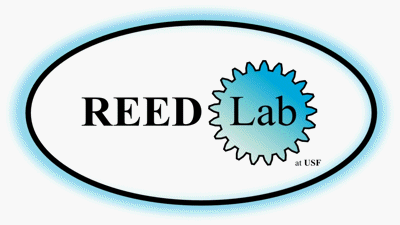
|
|
Human-Robot-Human Interaction
 |
Human-Robot-Human Interaction |
What is this project about?
In many everyday tasks two people interact with each other. People move a bed together or help someone learn to swing a tennis racquet or any number of other tasks. These tasks involve kinesthetic (body position and movement) interaction, a communication channel distinct from spoken language and gestures. Previous research includes many types of interactions involving one person and one robot or two people separated by a non-mechanical linkage, but few studies have included two or more people interacting with one robot locally.
An Example Task
Suppose you wanted to give someone a glass of water. Simple enough, you hand them the glass of water and they take it. Now, what was it that happened during this transaction? How did you know they had control of the glass and you could let go? If they didn't have a good grasp, would you still have let go?
Why do this research?
Understanding kinesthetic interaction could be important in designing robots that interact physically with humans, and in dual-control situations. This project aims to investigate the effects of how people interact with other people if a robot is contolling the mediation.
Experiments
The experiments consist of various combinations of two people working alone and working together so we can find differences in how people work together versus alone. The tasks they performed are variations of a simple move-into-the-target task. We used the crank, shown above, as well as other devices to test this interaction.
Another set of experiments involves replicating the interaction of one member of a dyad in a simulated robotic arm. The results of how two people interact are being used to design a robot to take the place of a human in a physical task.
Related Publications- L. J. Elliott, S. B. Hottman, W. L. Christian, and K. B. Reed. "Effects of Feedback Mapping on Human Control of Robotic Systems in Individual and Cooperative Tasks". In Diana Coleman, Ed., Human-Robot Interactions: Principles, Technologies, and Challenges, 2015, ISBN: 978-1-63463-774-9.
[ pdf | book information ] - K. B. Reed. "Cooperative Physical Human-Human and Human-Robot Interaction". In A. Peer and C. Giachritsis, Eds., Immersive Multimodal Interactive Presence, Springer Series on Touch and Haptic Systems, 2012, ISBN: 978-1-4471-2754-3.
[ pdf ] - William Christian. "Exploring the Human Interactivity with a Robot to Obtain the Fundamental Properties of Materials", Master's Thesis, University of South Florida, 2010.
[ pdf ] - K. B. Reed and M. Peshkin. "Physical Collaboration of Human-Human and Human-Robot Teams", IEEE Transactions on Haptics, Vol. 1, Num. 2, pp. 108-120, 2008.
[ IEEE Xplore | pdf | abstract ] - Kyle B. Reed. "Understanding the Haptic Interactions of Working Together", Ph.D. Thesis, Northwestern University, 2007.
[ pdf ] - K. B. Reed, J. Patton, M. Peshkin. "Replicating Human-Human Physical Interaction", Proc. of IEEE Intl. Conf. on Robotics and Automation (ICRA), Rome, Italy, April 2007.
[ pdf ] - K. B. Reed, M. Peshkin, M. Hartmann, M. Grabowecky, J. Patton, and P. Vishton. "Haptically Linked Dyads: Are Two Motor-Control Systems Better Than One?" Psychological Science, Vol. 17, Num. 5, pp. 365-366, May, 2006.
[ pdf | abstract ] - K. B. Reed, M. Hartmann, J. Patton, P. Vishton, M. Grabowecky, and M. Peshkin. "Haptic cooperation between people, and between people and machines", Proc. of IEEE Intl. Conf. on Intelligent Robots and Systems (IROS), Beijing, October 2006.
[ pdf ] - K. B. Reed, M. Peshkin, M. Hartmann, J. Colgate, and J. Patton. "Kinesthetic Interaction", Proc. of the 9th Intl. Conf. on Rehabilitation Robotics (ICORR), Chicago, USA, June, 2005.
[ pdf ] - K. B. Reed, M. Peshkin, J. Colgate, and J. Patton. "Initial Studies in Human-Robot-Human Interaction: Fitts' Law for Two People", Proc. of IEEE Intl. Conf. on Robotics and Automation (ICRA), New Orleans, USA, April 2004.
[ pdf ]
